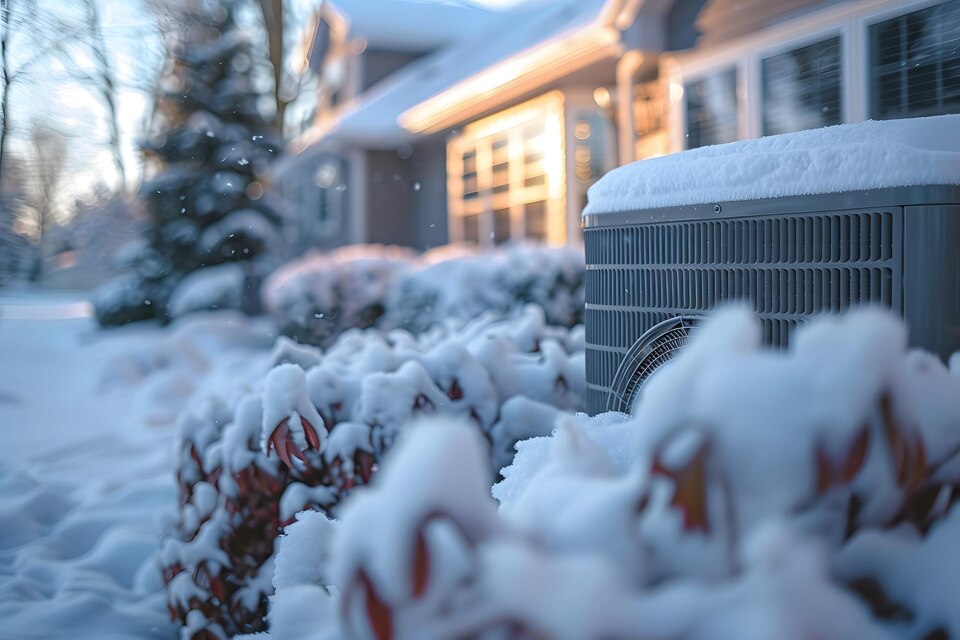Winter can be a challenging period for heat pumps, as they need to work harder to maintain a comfortable indoor temperature. Understanding how these systems function in colder weather is essential for homeowners looking to optimize their performance. By knowing how your heat pump operates, you can take the necessary steps to ensure it runs efficiently and reliably throughout the season.
Understanding How Heat Pumps Work in Winter
Heat pumps operate by transferring warmth from the outdoors into your home. Even in winter, there is still some heat in the outside air that the heat pump can use. The system uses refrigerant to absorb this heat and then compresses it to raise the temperature before releasing it inside your home.
During colder months, the efficiency of a heat pump can decrease because there is less heat available in the outside air. As temperatures drop, the heat pump must work harder to extract and move the heat indoors. This can lead to increased energy consumption and strain on the system.
Despite these challenges, heat pumps are designed to function effectively in various conditions. Advanced models come with technology that supports efficient operation at lower temperatures, ensuring your home remains warm. Knowing how your heat pump works in these conditions allows you to take steps to optimize its performance and maintain a cozy living environment.
Common Winter Problems for Heat Pumps
Winter weather can introduce several common problems for heat pumps, impacting their efficiency and performance. One frequent issue is ice buildup on the outdoor unit. During cold, wet weather, the coils can accumulate ice, which can restrict airflow and hinder the heat transfer process. Most heat pumps come with a defrost mode to address this, but severe ice buildup may require manual intervention.
Another problem involves the heat pump’s inability to maintain desired indoor temperatures. This issue often arises when the outdoor temperature drops significantly, causing the heat pump to work overtime. In extreme cases, the system may need auxiliary heating to keep your home comfortable.
Wear and tear can also become more apparent in winter. Components like the compressor and fan motor may experience increased stress, leading to potential breakdowns. Ensuring these parts are in good condition before winter sets in can help mitigate unexpected issues.
Lastly, airflow restrictions can reduce a heat pump’s efficiency. Clogged filters, blocked vents, and obstructed outdoor units can all contribute to poor airflow. Regular maintenance and checks can help identify and resolve these problems early, ensuring your heat pump operates effectively throughout the winter.
Tips for Maintaining Heat Pump Efficiency
Maintaining your heat pump’s efficiency during winter involves several key actions. First, regularly check and replace the air filters. Clogged filters reduce airflow, forcing the system to work harder. Replacing them monthly during heavy usage periods can significantly improve efficiency.
Clear any debris around the outdoor unit. Snow, leaves, and dirt can obstruct airflow and reduce performance. Keep at least two feet of clearance around the unit and periodically remove any buildup.
Inspect the thermostat settings. Make sure the thermostat is set to the correct mode and temperature. Smart thermostats can also help manage energy usage more efficiently by adjusting settings based on your schedule.
Perform routine maintenance checks. This includes inspecting electrical connections, checking refrigerant levels, and ensuring that the fans and coils are clean. Regular maintenance can prevent minor issues from becoming costly repairs.
Utilize auxiliary heat sparingly. While auxiliary heat can help during extremely cold temperatures, it is less efficient than your heat pump. Try to rely on the heat pump as much as possible to keep energy costs low.
When to Consider Upgrading Your Heat Pump
Determining when to upgrade your heat pump depends on several factors. One major sign is the age of your unit. Heat pumps generally have a lifespan of 10 to 15 years. If your unit is approaching or exceeding this age, it may be time to consider a replacement.
Frequent breakdowns and costly repairs are also indicators. If your heat pump requires regular maintenance, it may be more cost-effective to invest in a new unit. Persistent issues can signal that the system is struggling to keep up with demands.
Energy efficiency matters, too. Older heat pumps tend to consume more energy. Upgrading to a modern, energy-efficient model can lower your energy bills and provide more reliable performance.
Inconsistent heating is another sign. If your heat pump struggles to maintain a consistent temperature, it may be less efficient and less capable of providing adequate heating. A new unit can offer improved comfort and efficiency.
Conclusion
Managing your heat pump’s performance in winter conditions is crucial for maintaining a warm and comfortable home. By understanding how heat pumps work during the colder months, recognizing common issues, and following maintenance tips, you can ensure your system operates efficiently. Regular upkeep and timely upgrades contribute significantly to the unit’s longevity and performance.
Investing in a high-quality heat pump can make all the difference in winter comfort. For those considering an upgrade, exploring energy-efficient options is a wise choice. We offer a range of advanced, reliable heating equipment.
Visit I Heart Amana to find the perfect heating and cooling products in Minneapolis. Keep your home warm and energy-efficient this winter with our trusted products.



Recent Comments